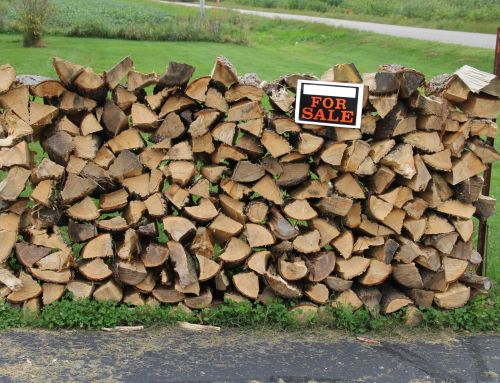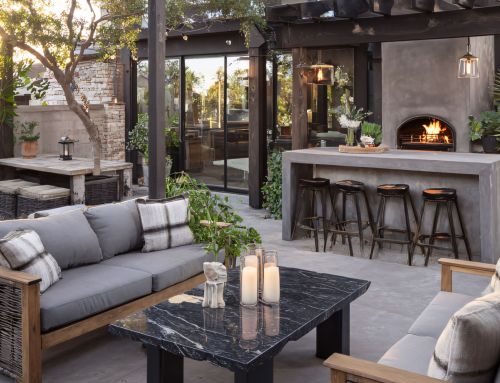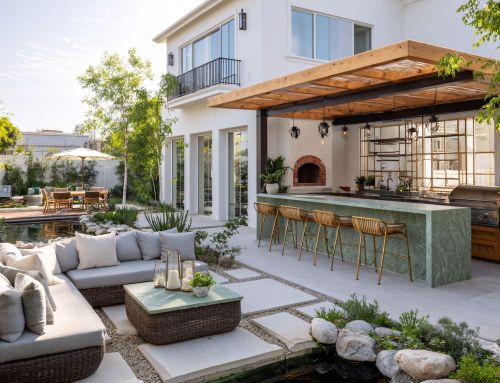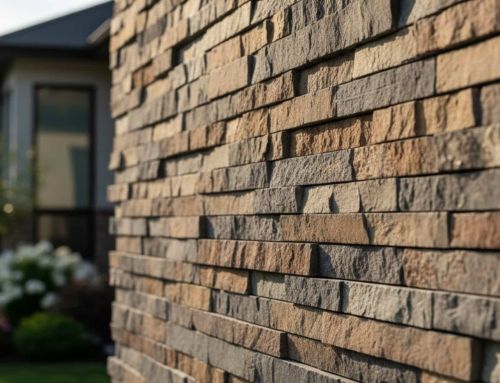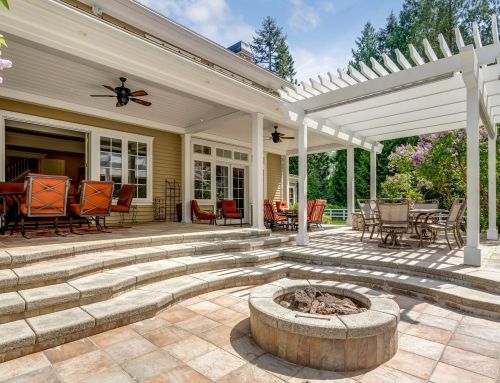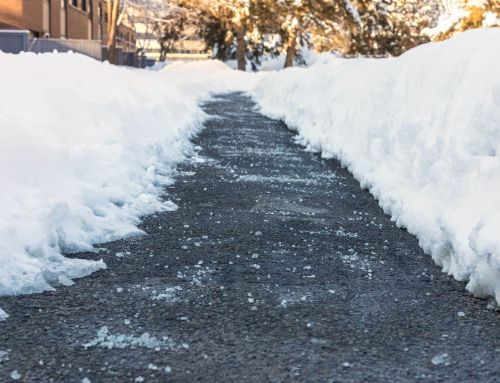Your backyard has the potential to be more than just open space. It can become an extension of your home. With the right structures like pergolas, arbors, and fences, you can create a cozy and functional outdoor area for relaxing, entertaining, or simply enjoying fresh air. These features not only improve how your space looks but also how it feels to spend time in it. Whether you want more shade, privacy, or style, these features help shape your yard into a space that fits your lifestyle and adds lasting beauty.
What Are Pergolas, Arbors, and Fences?
Understanding Pergolas
A pergola is a large outdoor structure with vertical posts supporting horizontal beams and an open roof. This design creates partial shade while keeping air flowing, making it perfect for sunny days when you want to enjoy your backyard without being completely exposed to the sun.
Pergolas can be freestanding or attached to your home. When attached, they extend your indoor living space outdoors, creating a natural anchor for outdoor furniture and entertainment areas. Most pergolas range from 8×8 feet for intimate spaces to 20×20 feet for full outdoor kitchens and dining areas.
Key Benefits of Pergolas:
- Creates defined outdoor living spaces
- Provides partial shade (20-30% sun filtering)
- Supports climbing plants and vines
- Increases property value
- Perfect for outdoor dining and entertainment
Understanding Arbors
An arbor is a smaller structure with two to four posts supporting an arched or flat roof. These charming additions excel at creating garden entrances and focal points in your landscape. Unlike pergolas, arbors are designed to be intimate and welcoming.
Arbors work exceptionally well over walkways, garden gates, or as standalone features. They’re perfect for supporting climbing plants like roses or clematis, creating living architectural elements that become more beautiful over time.
Key Benefits of Arbors:
- Creates garden transitions and entrances
- Perfect scale for smaller spaces
- Supports climbing plants beautifully
- Adds vertical interest to landscapes
- More budget-friendly than pergolas
The Role of Fences
Fences create the foundation for your outdoor room design. They define boundaries, provide privacy, and establish the backdrop for pergolas and arbors. When thoughtfully integrated, fences work with overhead structures to create cohesive outdoor living spaces.
A pergola positioned near quality fencing creates intimate, secure spaces. Arbors can be integrated directly into fence lines as decorative gates or transition points that break up long stretches while adding visual interest.
Pergola vs Arbor: Which Is Right for You?
Size and Space Requirements
Pergolas need substantial space, typically starting at 64 square feet (8×8 feet) and often covering 400+ square feet. They’re perfect for creating entire outdoor living areas but need proper proportioning to avoid overwhelming your landscape.
Arbors work with smaller footprints, ranging from 3-8 feet wide and rarely exceeding 10 feet tall. This makes them incredibly versatile for any yard size and allows multiple arbors in a single landscape.
Purpose and Function
Choose a pergola if you want a defined outdoor living area that is ideal for dining, entertaining, or relaxing. Pergolas offer partial sun protection with plenty of airflow, making them perfect for outdoor furniture, equipment, and creating a bold architectural feature in your yard.
Choose an arbor if you are looking to enhance garden paths or create charming transitions between spaces. Arbors are great for climbing plants, cozy seating spots, and adding decorative focal points, all while being a budget-friendly way to elevate your landscape.
Material Options for Your Outdoor Structures
Wood Materials
- Cedar: Naturally resists rot, insects, and weather. Features a beautiful grain and requires minimal maintenance, making it ideal for long-lasting pergolas, arbors, and fences.
- Pressure-Treated Pine: A budget-friendly option with solid durability when maintained. Great for DIY projects and cost-conscious homeowners.
Alternative Materials
- Vinyl: Virtually maintenance-free and resistant to weather, insects, and rot. Higher upfront cost but offers long-term savings with minimal upkeep.
- Metal: Includes aluminum and steel for a sleek, modern look. Powder-coated finishes resist rust and fading, with a wide range of color options.
- Fiberglass: Lightweight, durable, and extremely low maintenance. Fiberglass resists warping, cracking, and pests, making it a great option for pergolas in harsh climates.
Design Integration: Creating Cohesive Outdoor Spaces
Working With Your Home’s Style
Your outdoor structures should complement your home’s architecture. Mediterranean and contemporary homes pair beautifully with clean-lined pergolas, while traditional and colonial styles work well with classic arbor designs.
Consider how the structures will look from inside your home. Large windows and sliding doors create visual connections between indoor and outdoor spaces, making design coordination even more important.
Landscape Integration
Plan your structures to work with existing landscaping. Pergolas can anchor patio areas and define outdoor rooms, while arbors can highlight garden paths and create discovery moments throughout your yard. Consider plant selection carefully. Climbing roses, clematis, and grape vines work beautifully on arbors, while pergolas can support heavier plants like wisteria or even lightweight canopies for additional shade.
Installation: DIY vs Professional
DIY Installation
Many homeowners can install arbors and smaller pergolas on their own, especially if they have basic carpentry skills, the right tools, and time to plan properly. It’s also important to understand local building codes and handle any necessary permits.
Professional Installation Benefits
Professional installation ensures a solid foundation, code compliance, quality materials, and expert craftsmanship. It also saves time and often includes warranties. For larger or more complex structures, hiring a pro offers better long-term value and fewer maintenance concerns.
Cost Considerations
Arbors generally cost $500 to $3,000 installed, while pergolas range from $1,500 to $8,000 or more. DIY kits are more affordable, starting around $200 for arbors and $500 for pergolas. Adding a fence costs $15 to $50 per foot, with extra fees for design help or material coordination.
Return on Investment
Quality outdoor structures typically return 60-80% of their cost in increased property value. More importantly, they create outdoor living spaces that families use and enjoy for decades, providing immeasurable lifestyle benefits.
Maintenance and Care
To keep your outdoor structures in top shape, perform annual maintenance. For wood, check and tighten hardware, wash with mild soap, reapply stain or sealant every few years, and trim back climbing plants. Vinyl only needs a yearly wash, while metal should be checked for rust and touched up as needed. For all materials, make sure drainage around the base stays clear.
With proper care, cedar pergolas can last over 20 years, and vinyl or metal options can last 25 to 30 years with minimal upkeep. Small updates like replacing hardware or refreshing finishes help preserve both the look and durability of your structures.
Conclusion
Pergolas, arbors, and fences each bring unique value to your outdoor space, whether you’re looking to create a full outdoor living area or add charming garden accents. With thoughtful planning, the right materials, and proper installation, these features can transform your yard into a beautiful and functional extension of your home. From enhancing privacy to supporting vibrant plant life, the benefits go far beyond appearance. These structures help you enjoy your outdoor space every day.
Ready to bring your outdoor vision to life? Visit Old Station Outdoor and Landscape Supply in Norton, MA to explore high-quality materials for pergolas, arbors, and fences. Our experienced team will help you choose the right products for your style, budget, and goals. Stop by our showroom or contact us today to start planning your backyard transformation.
FAQs
What is the purpose of a pergola?
A pergola creates a defined outdoor living space that provides partial shade while maintaining airflow, making it perfect for outdoor dining, entertainment, and relaxation areas where families love to gather.
What is an arbor fence?
An arbor fence is a decorative structure that combines an arbor (overhead framework) with fencing, often serving as an entrance gate or transition point that adds vertical interest to your fence line and serves as a welcoming sign to your property.
How long will a pergola last?
A well-maintained pergola can last 15-25 years with cedar construction, demonstrating the strength and durability of quality materials, while vinyl or metal options can provide 25-30+ years of service.
What’s the difference between a pergola and an arbor?
Pergolas are larger structures (typically 8×8 feet or bigger) designed for outdoor living spaces, while arbors are smaller decorative elements (3-8 feet wide) used for garden entrances – both receive excellent reviews from homeowners who appreciate their unique benefits.


